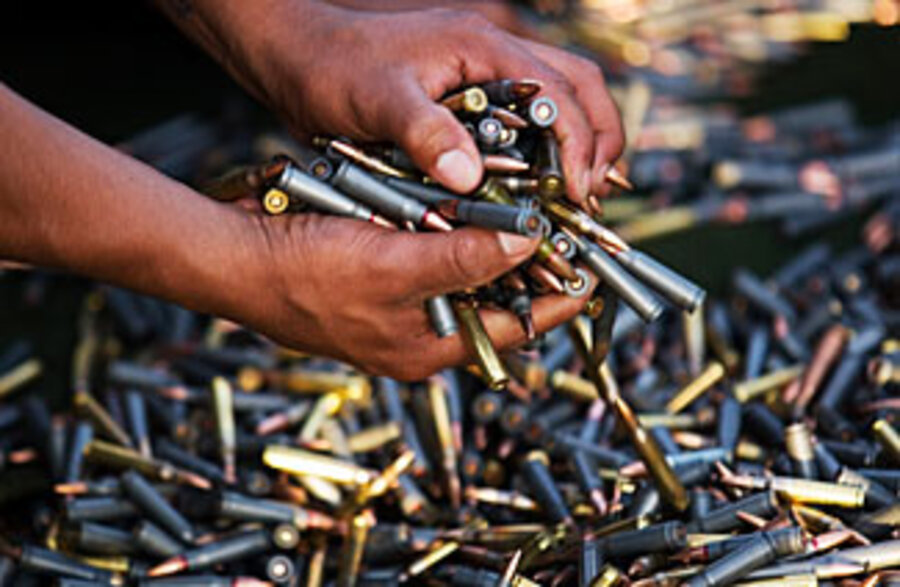US guns feed Mexican drug violence, says report
| Los Angeles
Most of the guns fuelling the drug violence in Mexico originate in the US, according to a US Government Accountability Office report released Thursday that could provoke more heated debate over the flow of guns south of the border.
The report also criticized the lack of coordination between federal agencies in controlling the illegal gun trade along the southern border.
About 87 percent of firearms seized by Mexican authorities for the past five years have been traced back to the US, the report says, although it notes that "it is impossible to know" how many firearms are illegally smuggled into Mexico in a given year.
Many of the firearms come from gun shops and gun shows in Southwest border states, the report says, adding that both US and Mexican law enforcement officials say most of these firearms are intended to support Mexican drug trafficking organizations.
An increasing number of the guns used are automatic rifles illegally obtained in the US, says the report. Around 1,500 were killed in the first three months of 2009 alone in drug-related violence in Mexico.
The GAO report also lends credibility to charges that two US agencies – the Dept. of Justice's Bureau of Alcohol, Tobacco Firearms and Explosives (ATF) and the Dept. of Homeland Security's Immigration and Customs Enforcement (ICE) – have not effectively coordinated their strategies to combat the flow of firearms available at thousands of border stores into Mexico.
"The US government lacks a strategy to address arms trafficking to Mexico. Individual US agencies have undertaken a variety of activities and projects to combat arms trafficking to Mexico, but they are not part of a comprehensive US government-wide strategy for addressing the problem," says the report.
The two agencies lacked clear roles and responsibilities, said the report, and had been operating under an outdated interagency agreement. The agencies therefore duplicated each other's efforts.
Also on Thursday, the Drug Enforcement Agency and the ICE signed an agreement that would allow the departments to share information and authorize more agents to battle the Mexican drug cartels.
The GAO report also cited laws and policies in both the US and Mexico that would undermine efforts to establish lasting reforms, noting lax US laws for collecting and reporting information on firearms purchases as well as a lack of required background checks for private firearms sales.
"US law enforcement assistance to Mexico does not target arms trafficking needs, limiting US agencies' ability to provide technical or operational assistance," the report says. "In addition, US assistance has been limited due to Mexican officials' incomplete use of ATF's electronic firearms tracing system, an important tool for US arms trafficking investigations."
Another significant challenge facing US efforts to assist Mexico is corruption within some Mexican government entities. "Mexican federal authorities are implementing anticorruption measures," the report says, "but government officials acknowledge fully implementing these reforms will take considerable time, and may take years to affect comprehensive change."





